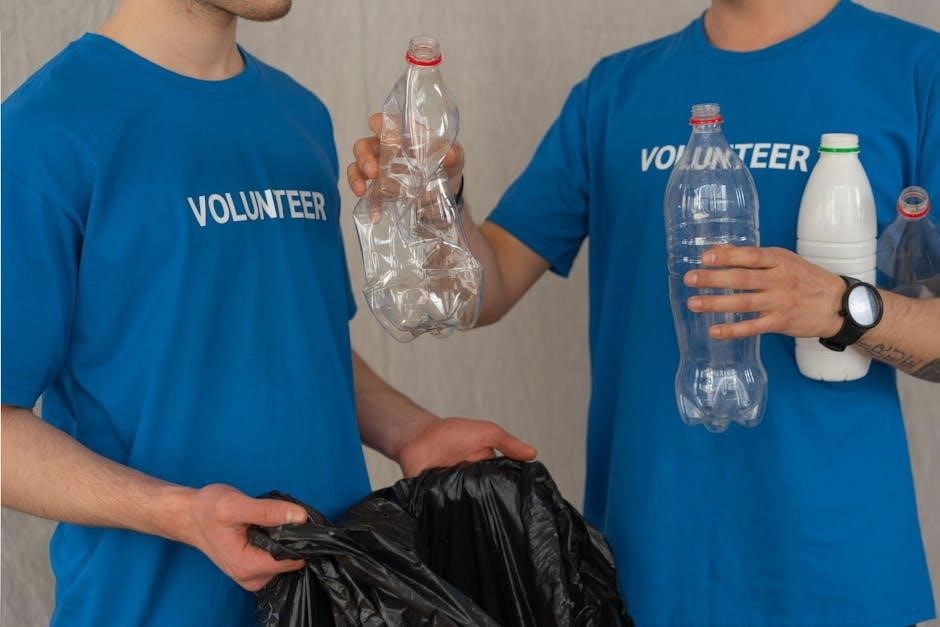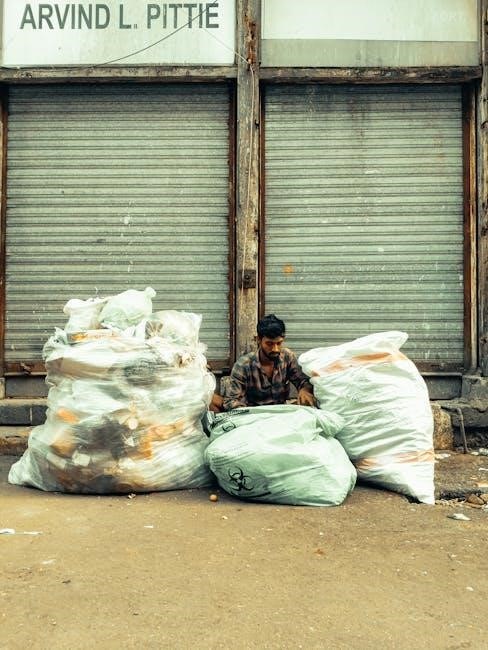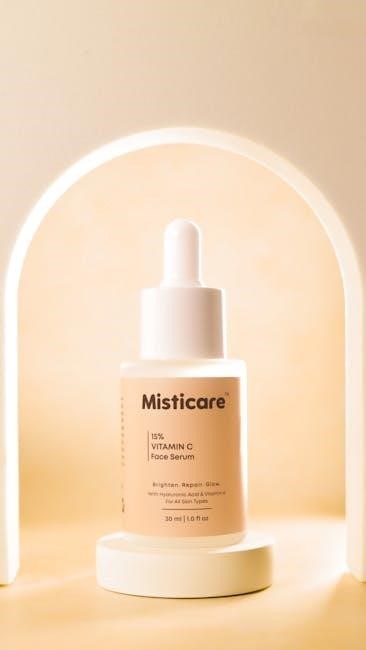The Dirty Dozen and Clean Fifteen are annual lists ranking fruits and vegetables by pesticide residue levels, helping consumers make informed choices. The Dirty Dozen highlights produce with higher pesticide residues, encouraging organic purchases, while the Clean Fifteen identifies options with lower residues, offering affordable alternatives. Both lists aim to reduce pesticide exposure and promote healthier grocery shopping.
Overview of the EWG Shoppers Guide to Pesticides in Produce
The EWG Shoppers Guide to Pesticides in Produce is an annual resource that ranks fruits and vegetables based on pesticide residue levels. Compiled by the Environmental Working Group (EWG), the guide analyzes data from over 46,000 samples of 46 types of produce tested by the U.S. Department of Agriculture (USDA). The guide is divided into two lists: the Dirty Dozen, highlighting produce with the highest pesticide residues, and the Clean Fifteen, showcasing fruits and vegetables with the lowest residues. By identifying pesticide contamination, the guide helps consumers make informed decisions about when to choose organic options and when conventionally grown produce is acceptable. This resource is updated annually to reflect the latest testing results.
Importance of Understanding Pesticide Residue in Fruits and Vegetables
Understanding pesticide residue in produce is crucial for reducing exposure to potentially harmful chemicals. Pesticides, while designed to protect crops, can linger on fruits and vegetables and may pose health risks, especially for children and pregnant women. The Dirty Dozen and Clean Fifteen lists provide clarity on which produce items are more likely to contain higher or lower pesticide residues. By being informed, consumers can make healthier choices, such as opting for organic versions of high-residue foods and saving money by purchasing conventional low-residue options. This knowledge empowers individuals to balance nutrition, budget, and safety in their daily diets.

The Dirty Dozen: Fruits and Vegetables with High Pesticide Residue
The Dirty Dozen identifies produce with the highest pesticide residues, such as strawberries, spinach, and apples. These items often have thin skins or absorb pesticides during growth, making them more contaminated. Buying organic for these foods is strongly recommended to reduce exposure to harmful chemicals.

2023 Dirty Dozen List: Top 12 Fruits and Vegetables
In 2023, the Dirty Dozen list highlighted the top 12 fruits and vegetables with the highest pesticide residues. Strawberries topped the list for the seventh consecutive year, followed by spinach, kale, peaches, and pears. Nectarines, apples, and grapes also ranked high, with cherries and peppers making their debut. These findings were based on USDA data analyzing over 46,000 samples. The list emphasizes the importance of buying organic for these items, as nearly 95% of samples showed detectable pesticide residues. This guide helps consumers prioritize their shopping choices to minimize exposure to harmful chemicals in their diets.
2024 Updates to the Dirty Dozen List
The 2024 Dirty Dozen list revealed notable changes, with spinach claiming the top spot as the most contaminated produce. Strawberries, previously number one, dropped to second place, while kale, collard, and mustard greens rose to third. Grapes, peaches, and pears maintained their high rankings, and peppers were added to the list due to increased pesticide detection. These updates reflect shifting agricultural practices and pesticide use. The list, compiled from over 47,000 USDA samples, underscores the importance of choosing organic options for these items to minimize pesticide exposure. Consumers are encouraged to reference the updated guide for informed grocery shopping decisions.
2025 Dirty Dozen List: Key Findings and Changes
The 2025 Dirty Dozen list introduced significant changes, with spinach maintaining its top position as the most pesticide-contaminated produce. Strawberries remained in second place, while kale, collard, and mustard greens retained their third spot. Notably, blackberries entered the list at tenth position due to higher pesticide residues. Apples and pears continued to rank high, reflecting persistent pesticide use in their cultivation. The list, based on USDA data, highlighted that 95% of tested samples contained detectable pesticide residues. These findings emphasize the importance of opting for organic versions of these fruits and vegetables to reduce exposure to harmful chemicals. The updated guide provides consumers with essential insights for safer grocery shopping.
Why These Fruits and Vegetables Have High Pesticide Levels
Certain fruits and vegetables on the Dirty Dozen list tend to have higher pesticide residues due to their thin skins, which absorb chemicals more easily. For example, strawberries and spinach are particularly vulnerable because their delicate surfaces are difficult to clean thoroughly. Additionally, these crops often require more pesticides to protect against pests and diseases. The USDA testing process reveals that residues can persist even after washing. These factors, combined with intensive farming practices, contribute to higher pesticide levels in these items. The EWG highlights these findings to encourage consumers to opt for organic versions when possible, reducing exposure to potentially harmful chemicals. This helps promote safer eating habits and supports sustainable agriculture.

The Clean Fifteen: Fruits and Vegetables with Low Pesticide Residue
The Clean Fifteen lists fruits and vegetables with the lowest pesticide residues, such as avocados and sweet corn. These items are safer to buy conventionally grown, reducing exposure to harmful chemicals while offering budget-friendly options for healthier eating.
2023 Clean Fifteen List: Top 15 Fruits and Vegetables
The 2023 Clean Fifteen list identifies produce with the lowest pesticide residues, offering safer, conventionally grown options. Topping the list are avocados, sweet corn, and pineapple, with over 80% of samples showing no detectable pesticides. Other items include frozen sweet peas, onions, papaya, eggplant, asparagus, kiwi, cabbage, cantaloupe, broccoli, mushrooms, honeydew melon, and grapefruit. These fruits and vegetables are ideal for consumers seeking to minimize pesticide exposure without necessarily buying organic. The list is compiled from USDA data, providing a reliable guide for making healthier, cost-effective grocery choices.
2024 Updates to the Clean Fifteen List
The 2024 Clean Fifteen list saw notable changes, with bananas and oranges joining the ranks of low-pesticide produce. According to the EWG’s updated rankings, 65% of the items on the list had no detectable pesticide residues, while 10% showed traces of two or more pesticides. Sweet corn and avocados remained top choices, with over 90% of samples pesticide-free. New entries, such as bananas, highlighted their consistency in low contamination. The list also emphasized that conventionally grown produce from the Clean Fifteen is a cost-effective and safe alternative for consumers. These updates reflect the EWG’s commitment to helping shoppers make informed decisions about their fruit and vegetable choices.
2025 Clean Fifteen List: Key Findings and Changes
In 2025, the Clean Fifteen list revealed significant updates, with sweet corn and avocados maintaining their top positions as the lowest in pesticide residues. Over 90% of samples for these items showed no detectable pesticides. Pineapples and kiwis were new additions, while bananas remained a consistent low-contamination option. The EWG noted that 65% of all items on the list had no pesticide residues, and only 10% contained traces of two or more pesticides. These findings reinforce the practicality of choosing conventionally grown produce from the Clean Fifteen for budget-conscious shoppers seeking to minimize pesticide exposure without compromising on nutrition or cost.
Why These Fruits and Vegetables Have Low Pesticide Levels
Fruits and vegetables on the Clean Fifteen list typically have low pesticide levels due to natural protective barriers like thick skins or peels, which reduce residue exposure. For example, avocados, bananas, and sweet corn have outer layers that shield the edible parts from pesticides. Additionally, farming practices for these crops often involve fewer pesticides, as they may be less susceptible to pests or easier to protect. The EWG notes that over 90% of Clean Fifteen items showed no detectable residues, with only 10% containing traces of two or more pesticides. These factors make them safer, affordable choices for consumers aiming to minimize pesticide exposure without opting for organic produce.
How the Lists Are Compiled
The EWG compiles the lists using USDA data, testing thousands of fruit and vegetable samples annually for pesticide residues and ranking them to help consumers make informed choices.

Methodology Behind the Dirty Dozen and Clean Fifteen Rankings
The EWG develops the rankings using USDA data from thousands of fruit and vegetable samples tested annually. They analyze pesticide residue levels, focusing on factors like the number of pesticides detected, average residue levels, and the percentage of samples with detectable residues. Produce with higher pesticide contamination is ranked on the Dirty Dozen, while items with lower residues are placed on the Clean Fifteen. This methodology helps consumers identify when buying organic is most beneficial and when conventionally grown produce is a safer, cost-effective choice, promoting informed decisions for healthier grocery shopping.
USDA Data and Testing Process
The USDA collects data on pesticide residues through rigorous testing of over 46,000 samples of 46 fruits and vegetables annually. Samples are washed and prepared as consumers typically would before testing. The USDA detects pesticide residues using advanced analytical methods, documenting both the type and amount of pesticides found. This data is then categorized and analyzed by the EWG to compile the Dirty Dozen and Clean Fifteen lists. The transparency of this process ensures consumers have reliable information to make informed choices about their produce purchases, balancing health and budget considerations effectively.

Practical Implications for Consumers
Understanding the Dirty Dozen and Clean Fifteen helps consumers prioritize purchasing organic for high-pesticide produce and opt for conventionally grown options when possible, reducing exposure and saving money.
When to Buy Organic: Key Takeaways from the Dirty Dozen
The Dirty Dozen list identifies produce with the highest pesticide residues, emphasizing the importance of buying organic for these items. Strawberries, spinach, kale, peaches, pears, nectarines, apples, grapes, peppers, cherries, and tomatoes topped the 2023 list, often showing significant contamination. Choosing organic for these items reduces pesticide exposure, supports sustainable farming, and aligns with eco-friendly practices. Since the list is updated annually, consumers should check each year’s rankings. By prioritizing organic for high-residue produce, shoppers can minimize pesticide intake effectively while promoting environmental health.
When Conventionally Grown Produce Is Acceptable: Insights from the Clean Fifteen
The Clean Fifteen list highlights fruits and vegetables with the lowest pesticide residues, making conventional options acceptable and cost-effective. Produce like avocados, sweet corn, pineapple, and onions often rank high on this list, showing minimal to no detectable pesticides. These findings allow consumers to save money by purchasing non-organic versions of these items without compromising health. The EWG’s annual updates ensure the list reflects current data, helping shoppers make informed decisions. By opting for conventionally grown Clean Fifteen items, individuals can balance budget and health, reducing pesticide exposure while enjoying a variety of fresh produce.

Tips for Reducing Pesticide Exposure
Buy organic for Dirty Dozen items and opt for conventional Clean Fifteen produce to minimize pesticide exposure. Always wash fruits and vegetables thoroughly before consumption.

Washing and Preparing Fruits and Vegetables
Thoroughly washing fruits and vegetables is essential to reduce pesticide exposure. Start by rinsing produce under running water to remove surface pesticides. For firm-skinned items like apples or potatoes, use a vegetable brush to scrub away residues. Avoid using soap or detergent, as they can leave harmful residues. Soaking produce in cold water for 10-15 minutes can further help loosen pesticides. Even after washing, some pesticide residues may remain, so combining washing with informed choices from the Dirty Dozen and Clean Fifteen lists maximizes safety. Organic options for high-residue items are still recommended for optimal protection.
Understanding Labels and certifications
Understanding Labels and Certifications
Understanding labels and certifications is crucial for making informed choices about pesticide exposure. The USDA Organic label ensures produce is grown without synthetic pesticides, making it a reliable choice for items on the Dirty Dozen list. Non-GMO and Fair Trade labels also provide additional assurances but don’t directly address pesticide use. The EWG Verified mark is another certification that meets stringent pesticide standards. Always check for these labels when purchasing produce, especially for high-residue items. Knowing what each certification means helps consumers align their choices with health and environmental goals, making grocery shopping safer and more sustainable. This knowledge empowers shoppers to make better decisions based on the Dirty Dozen and Clean Fifteen guidelines.

Criticisms and Controversies
The Dirty Dozen and Clean Fifteen lists face criticism for perceived oversimplification of pesticide risks; Some argue the rankings alarm consumers without sufficient context on health impacts.
Debates Over the Accuracy of the Dirty Dozen and Clean Fifteen Lists
The accuracy of the Dirty Dozen and Clean Fifteen lists has sparked debate among experts. Critics argue that the rankings may oversimplify pesticide risk, as residue levels often fall below safety thresholds set by regulatory agencies; Some scientists claim the lists alarm consumers without providing context on actual health risks. Additionally, the methodology behind the rankings has faced scrutiny, with concerns that it prioritizes detection over toxicity, potentially leading to misleading conclusions. While the lists aim to inform consumers, critics emphasize the need for a more nuanced understanding of pesticide exposure and its implications for human health.
Industry Response to the EWG Rankings
The agricultural industry has often criticized the EWG’s Dirty Dozen and Clean Fifteen rankings, arguing they create unnecessary fear among consumers. Industry representatives contend that pesticide residues on produce are typically within safe limits set by regulatory bodies; They emphasize that the lists lack scientific context, potentially discouraging people from consuming fruits and vegetables altogether. Some growers and trade organizations have also questioned the methodology used by EWG, suggesting it oversimplifies complex data. The industry advocates for a balanced approach, promoting both conventional and organic options without stigmatizing produce based on pesticide residues. They highlight the importance of a diverse diet for public health.
The Dirty Dozen and Clean Fifteen lists empower consumers to make informed choices, reducing pesticide exposure while promoting healthier diets. These rankings remain vital tools for mindful shopping decisions.
Why the Dirty Dozen and Clean Fifteen Lists Matter
The Dirty Dozen and Clean Fifteen lists are essential for consumers seeking to minimize pesticide exposure. By identifying produce with high or low pesticide residues, these lists guide healthier shopping decisions. The Dirty Dozen highlights fruits and vegetables that are more likely to contain higher pesticide levels, encouraging consumers to opt for organic options when possible. Conversely, the Clean Fifteen provides affordable alternatives with lower residues, making it easier for shoppers to balance health and budget. These rankings empower individuals to make informed choices, promoting safer diets and reducing potential health risks associated with pesticide consumption.
How to Use the Lists for Healthier Grocery Shopping
Using the Dirty Dozen and Clean Fifteen lists can significantly enhance your grocery shopping strategy. Start by consulting the lists to identify which fruits and vegetables are most contaminated with pesticides. Prioritize buying organic versions of produce on the Dirty Dozen list, such as strawberries and spinach, to minimize exposure. For items on the Clean Fifteen, like avocados and onions, conventional options are generally safe and more budget-friendly. This approach helps balance health and cost while reducing pesticide intake. Always wash produce thoroughly, even if it’s on the Clean Fifteen, to further ensure safety and quality.

Additional Resources
Download the Dirty Dozen and Clean Fifteen PDF guide from the EWG website for a comprehensive list and tips on reducing pesticide exposure. Stay updated with annual reports and additional resources.
Downloading the Dirty Dozen and Clean Fifteen PDF Guide
The Dirty Dozen and Clean Fifteen PDF guide is available for free on the Environmental Working Group’s (EWG) website. This comprehensive resource provides detailed rankings of fruits and vegetables based on pesticide residue levels. The guide includes tips for reducing exposure, summaries of the latest findings, and a printable version for easy reference. By downloading the guide, consumers can make informed decisions about when to buy organic and when conventionally grown produce is acceptable. Annual updates ensure the information stays current, reflecting the most recent data from the USDA. This handy guide is a valuable tool for healthier grocery shopping and pesticide awareness.
Staying Updated on Annual Changes to the Lists
To stay informed about the latest updates to the Dirty Dozen and Clean Fifteen lists, consumers can visit the Environmental Working Group’s (EWG) website. The EWG publishes an annual Shoppers Guide to Pesticides in Produce, which includes the most recent rankings based on USDA pesticide testing data. Subscribers to the EWG newsletter receive notifications when new lists are released, ensuring they have the latest information. Additionally, following the EWG on social media or downloading their app provides real-time updates on changes to the lists. Staying updated helps consumers make informed decisions about their produce choices and reduce pesticide exposure effectively.




